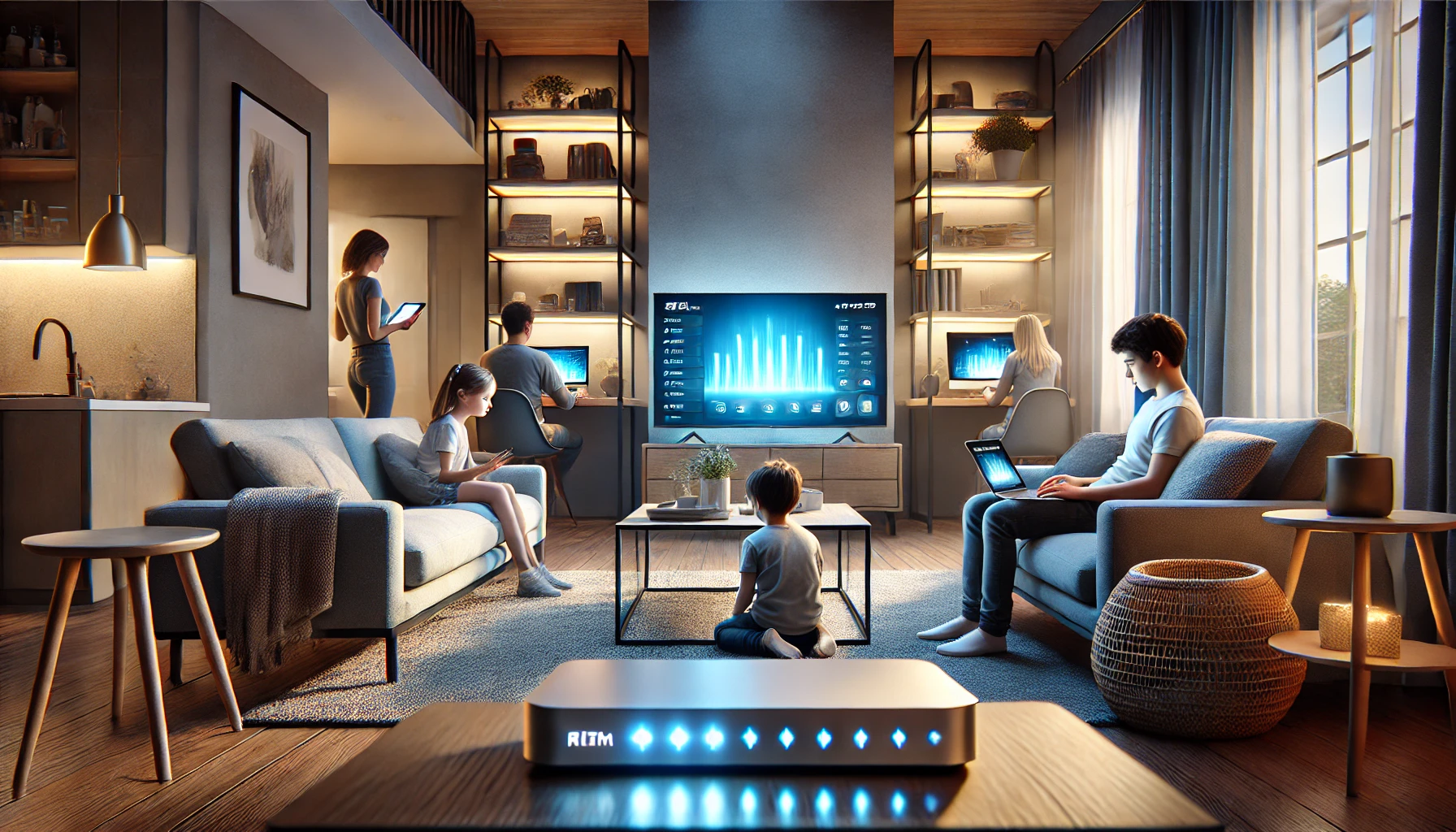What is “Gigabit Internet” and Do You Need It for Your Home?

Gigabit internet is revolutionising the way we connect and interact with the digital world. With speeds that far exceed traditional connections, it offers new opportunities for seamless streaming, gaming, and working. But is it the right choice for your household? Let’s dive into the details.
Understanding Gigabit Internet
Gigabit internet is the latest standard in internet connectivity, offering data transfer speeds of up to 1 Gbps. In practice, this means you can download large files, stream videos in 4K or 8K quality, and use resource-intensive online applications without delays. Such speeds can transform the digital experience, allowing multiple users in a household to perform demanding online tasks simultaneously without interruptions.
For example, while one person streams high-definition content on a smart TV, another can participate in a virtual conference call, and yet another can download large files—all without a noticeable drop in performance. This capability makes gigabit internet a game-changer for homes with heavy internet usage.
How Gigabit Internet Works
The technology behind gigabit internet relies on modern optical fibre networks, which use light to transmit data at incredible speeds. GPON (Gigabit Passive Optical Network) technology plays a key role, enabling efficient data transfer to multiple households without active components along the way. Fibre optics not only provide higher speeds but also ensure minimal signal loss over long distances, a common limitation with older DSL or cable internet technologies.
Furthermore, gigabit internet utilises advanced networking equipment, such as routers and modems designed specifically for high-speed connections. This combination of cutting-edge infrastructure and devices ensures a smooth and reliable internet experience for end users.
Do You Need Gigabit Internet at Home?
Determining whether gigabit internet is essential for your home depends on how you and your household use the internet. If you’re a family of casual internet users who primarily browse websites and stream videos in HD, you may not require gigabit speeds. However, households with multiple users performing high-bandwidth tasks simultaneously will benefit significantly from the upgrade.
For instance, gamers often require low latency and stable connections, which gigabit internet can deliver. Similarly, remote workers handling video conferencing, cloud-based applications, or large file transfers can rely on the consistency and speed of gigabit internet. For smart homes with numerous connected devices, such as cameras, thermostats, and voice assistants, gigabit speeds ensure seamless integration and functionality.
Cost of Gigabit Internet
While gigabit internet offers unparalleled speeds, it comes at a higher price compared to traditional broadband packages. However, the investment may be worth it for those who rely heavily on their internet connection for work, entertainment, or managing smart devices. Many internet service providers offer competitive bundles that include equipment rental, technical support, and sometimes additional perks like access to streaming platforms.
When considering gigabit internet, it’s important to evaluate your current and future needs. If you anticipate an increase in online activity, upgrading to gigabit internet now might save you from bandwidth constraints later. Additionally, as the technology becomes more widespread, costs are expected to decrease, making it a more viable option for a larger audience.

Advantages and Disadvantages of Gigabit Internet
The primary advantage of gigabit internet is its speed. It allows users to perform data-intensive tasks without delays, whether it’s streaming, gaming, or collaborating on cloud-based projects. Stability is another significant benefit, as fibre-optic connections are less prone to disruptions caused by environmental factors or network congestion. This reliability makes gigabit internet an excellent choice for both households and businesses.
However, there are some downsides to consider. Gigabit internet is not yet universally available, with coverage often limited to urban areas or newly developed neighbourhoods. Installation can also be more complex, requiring specific infrastructure that may not be present in older buildings. Additionally, the higher cost might deter users who don’t require such speeds for their daily activities.
How to Check if Gigabit Internet is Available in Your Area
To determine whether gigabit internet is an option for your home, start by contacting local internet service providers. Many providers list their coverage areas on their websites, allowing you to quickly check availability. Some regions also have comparison tools or websites dedicated to showcasing internet options by address.
If gigabit internet is not yet available in your area, consider alternatives like hybrid fibre-coaxial networks, which can offer speeds close to gigabit levels. Additionally, keeping an eye on local infrastructure developments may provide insights into when gigabit services will become accessible. As demand for faster internet grows, more providers are expanding their networks to meet consumer needs.
